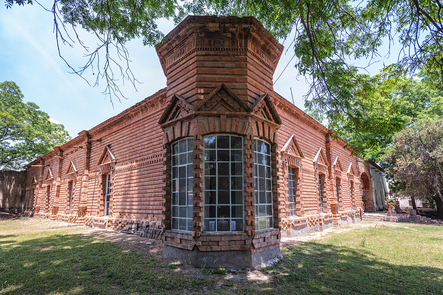Hacienda de Pardo en Villa de Reyes
Hacienda de Pardo, history and architecture that transcend centuries

Since the early 17th century, the region began shaping one of its most notable heritages: Hacienda de Pardo. In 1600, Domingo Gallegos was granted two caballerías of land, where he built charcoal ovens, a sugar mill, and a ranch that laid the foundations for the area’s agricultural and productive activity. In 1606, Royal Scribe Matías Pardo acquired these lands, consolidating what is now known as Hacienda de Pardo, which he later passed on to his children Pedro, Juan, and Leonor Pardo de Quesada, maintaining the family tradition through generations.
The hacienda’s architecture is remarkable, highlighted by the main house, built from its foundations by Baron Von Hiller, which preserves all the splendor of colonial style. The chapel is also noteworthy, housing one of the oldest sculptures brought to the valley in the 16th century: San Salvador de Burgos, a true historical and religious treasure.
The hacienda is not only an architectural testament but also a key point in the region’s history. Remnants of the narrow-gauge railway built by Octaviano Cabrera Lacavex to connect Jesús María with Labor del Río can still be seen, reflecting the logistical and economic importance of the site over time.
Visiting Hacienda de Pardo is to immerse yourself in centuries of history, architecture, and culture. Every corner, from the main house to the chapel and the railway remnants, invites visitors to imagine the lives of those who inhabited this space and to connect with the legacy that still defines the region’s identity today.